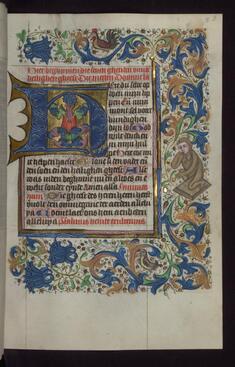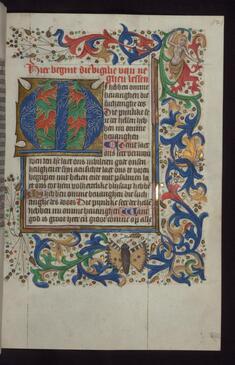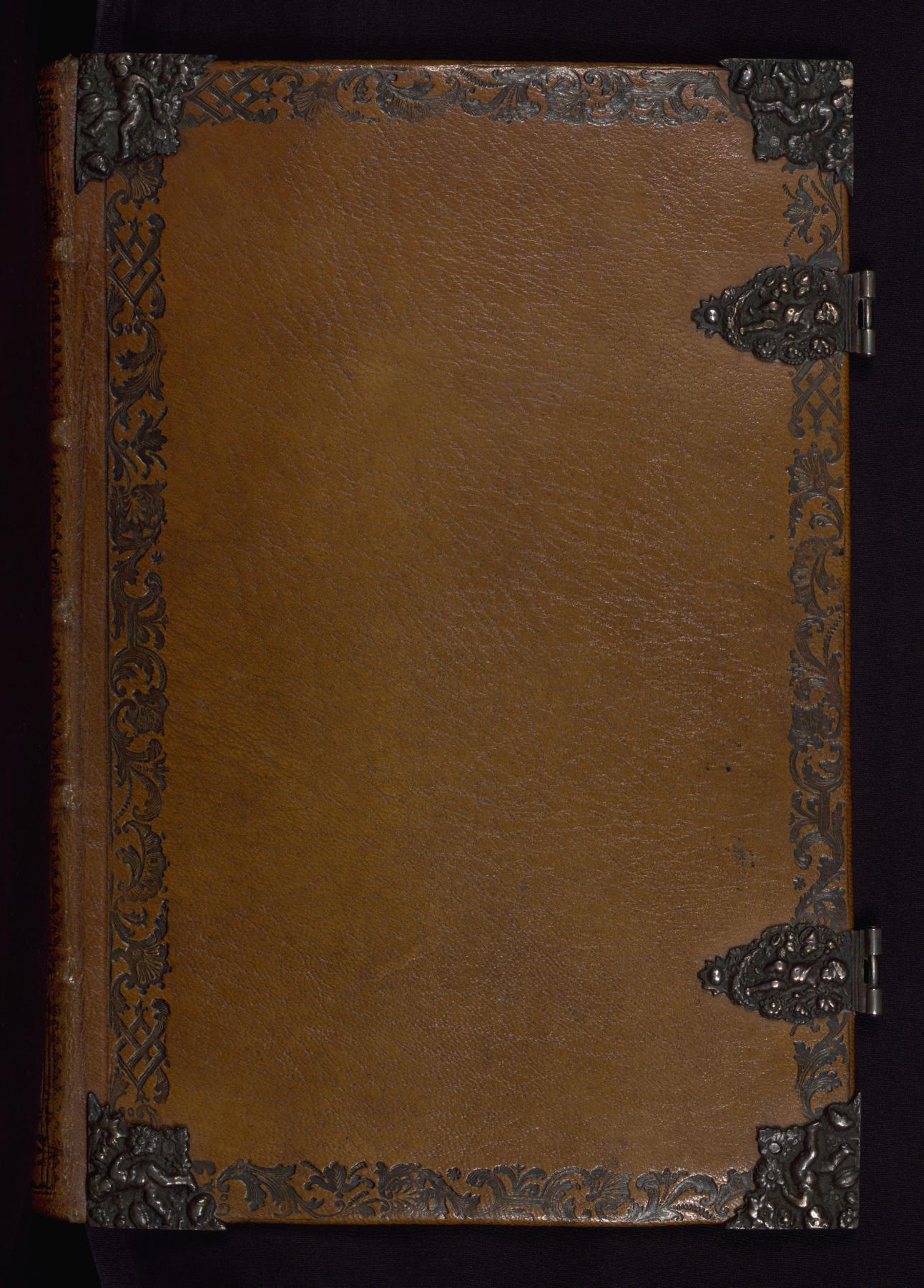Book of Hours in Dutch
(Manuscripts and Rare Books, Medieval Europe )
This book of hours was created in the Netherlands in the fifteenth century. Written entirely in Dutch, its calendar is for the use of Utrecht. However, it was probably made in Haarlem, which produced books of hours with this kind of border decoration. Its folios are highly finished, and it is richly illuminated throughout with sprouting foliage, occasionally inhabited by people, animals, and grotesques. Large decorative initials mark the main divisions in the text, the first of which is historiated with an image of the Virgin and Child. Especially notable is the fine quality and abundance of its burnished gold, found in the initials and vegetation on nearly every page of the manuscript.
Provenance
Provenance (from the French provenir, 'to come from/forth') is the chronology of the ownership, custody, or location of a historical object. Learn more about provenance at the Walters.
Marshall C. Lefferts, New York [date and mode of acquisition unknown]; George H. Richmond, New York, 1901 [no. 56]; Henry Walters, Baltimore [date and mode of acquisition unknown]; Walters Art Museum, 1931, by bequest.
Exhibitions
| 1998 | The Origins of Dutch Painting: Manuscripts from the Fifteenth Century. The Walters Art Gallery, Baltimore. |
Geographies
Netherlands
(Place of Origin)
France (Place of Binding)
Measurements
Folio H: 7 1/2 × W: 5 3/16 in. (19.1 × 13.2 cm)
Credit Line
Acquired by Henry Walters
Location in Museum
Not on view
Accession Number
In libraries, galleries, museums, and archives, an accession number is a unique identifier assigned to each object in the collection.
In libraries, galleries, museums, and archives, an accession number is a unique identifier assigned to each object in the collection.
W.192
Do you have additional information?
Related Objects

Initial "H" (Here du selte) with Virgin and Child, and Prophet with Scroll in Margin

Foliate Initial "H" (Here Ihesu Criste) with Grotesques in Margin

Foliate Initial "H" (Here du Selte) with Human-faced Animal in Margin

Foliate Initial "H" (Here in Dynre) with Beast-legged Bishop in Margin




